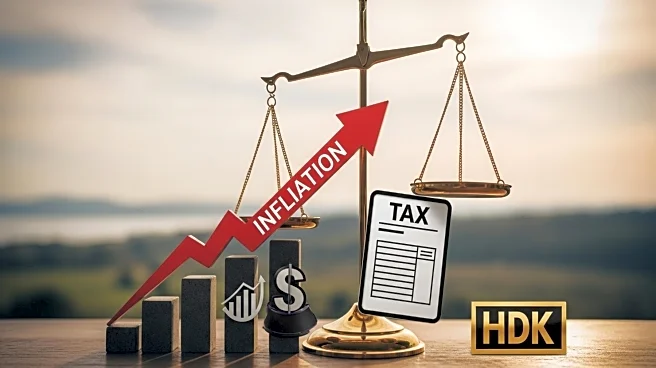What's Happening?
The IRS has announced changes to the tax regulations affecting 401(k) catch-up contributions for high earners, set to take effect in the 2026 tax year. Under the new rules, individuals earning $145,000 or more will be required to make catch-up contributions to after-tax Roth accounts, rather than the traditional before-tax accounts. This change stems from the SECURE 2.0 Act, a law passed in 2022 aimed at enhancing retirement savings options. Currently, workers aged 50 and above can choose between before-tax traditional accounts and after-tax Roth accounts for their catch-up contributions, which provide an upfront tax deduction. However, starting in 2026, high earners will lose this option, potentially increasing their taxable income. The change is significant for those nearing retirement age, as it alters the tax benefits associated with their retirement savings strategies.
Why It's Important?
This regulatory shift is crucial for high earners planning their retirement savings, as it affects the tax advantages of their contributions. By mandating after-tax Roth accounts for catch-up contributions, the IRS is removing the immediate tax deduction benefit, which could lead to higher taxable income for these individuals. This change may prompt high earners to reassess their retirement strategies, potentially influencing their financial planning and investment decisions. Employers may need to adapt by offering Roth 401(k) options, as not all retirement plans currently include them. The broader impact on the retirement savings landscape could be significant, as it may drive changes in how retirement plans are structured and offered by employers.
What's Next?
Employers are likely to respond by increasing the availability of Roth 401(k) options in their retirement plans, as the demand for these accounts is expected to rise. Currently, major financial institutions like Fidelity and Vanguard have already expanded their offerings, with a significant percentage of their managed plans including Roth options. As the 2026 tax year approaches, individuals affected by the change will need to consult financial advisors to optimize their retirement savings strategies under the new regulations. Additionally, there may be further discussions and potential legislative actions to address any unintended consequences of the SECURE 2.0 Act on retirement planning.
Beyond the Headlines
The shift towards Roth accounts for high earners may have long-term implications for retirement savings culture in the U.S. While Roth accounts offer tax-free growth and withdrawals, they lack the immediate tax deduction benefit, which could alter how individuals perceive and utilize their retirement savings. This change might encourage a broader adoption of Roth accounts, potentially influencing future legislative decisions regarding retirement savings policies. Moreover, the emphasis on after-tax contributions could lead to increased financial literacy and awareness among savers, as they navigate the complexities of tax-efficient retirement planning.










